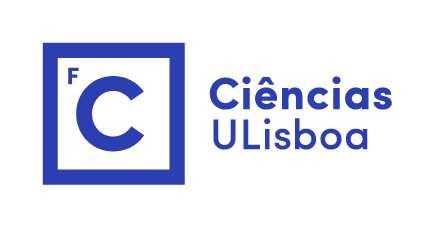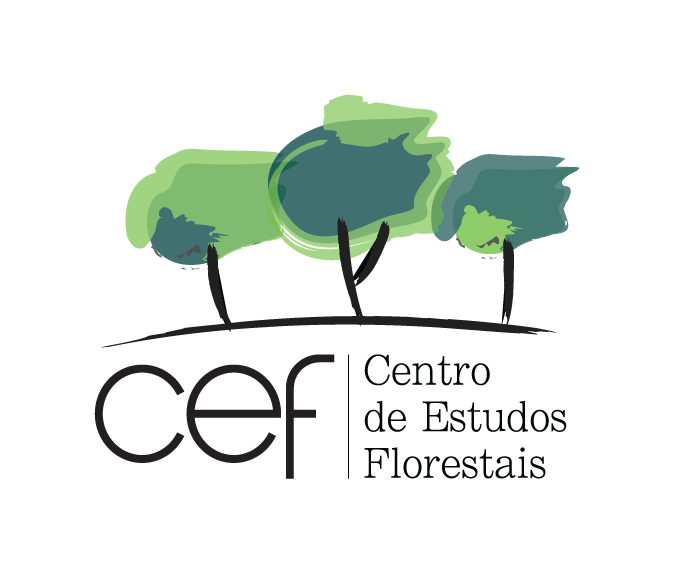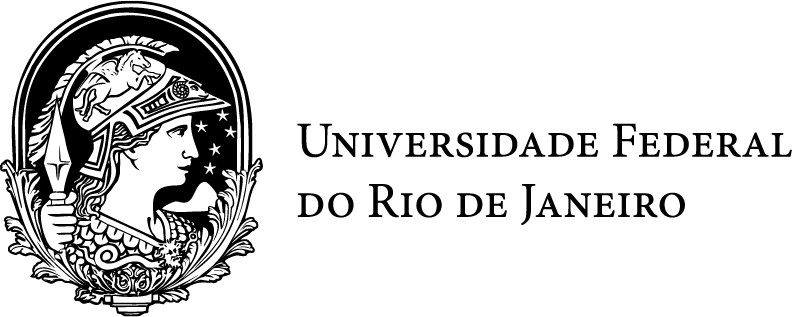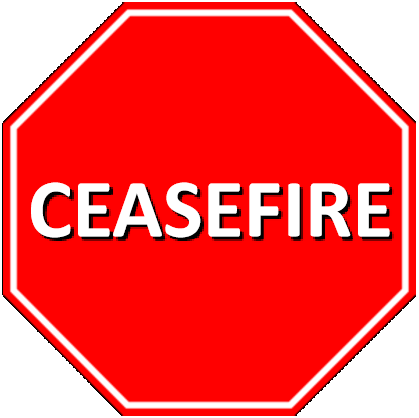
Sumário
A dimensão trágica dos incêndios de 2017 em Portugal, quer em termos de perdas de vidas humanas, quer de prejuízos económicos
e sociais, puseram em causa políticas há muito estabelecidas de gestão de fogo e trouxeram a lume vulnerabilidades aos níveis
estrutural e operacional do sistema vigente de prevenção e combate a incêndios. Nesta conformidade, o Conselho de Ministros de
Portugal aprovou um Programa de regeneração do Pinhal Interior (Resolução 1/2018) que aponta para a necessidade de se
disponibilizar informação obtida da Observação da Terra e que inclua previsões de perigo meteorológico e de perigo estrutural de
incêndio.[...]
Nesta conformidade, os objetivos do projecto FireCast são: 1) analisar os megaincêndios e a estação de fogos de 2017 a fim de identificar os fatores que contribuíram para a sua
excecionalidade; 2) desenvolver métodos estatísticos ótimos para produzir mapas anuais de perigo estrutural de incêndio; 3)
fornecer previsões diárias de perigo meteorológico de incêndio com 1 a 10 dias de antecedência e com informação quantitativa
acerca da sua incerteza; 4) combinar a informação de perigos estrutural e meteorológico de incêndio em classes de perigo de
incêndio que incorporem informação acerca da possibilidade de um megaincêndio; 5) efetuar previsões horárias para o dia seguinte
de perigo meteorológico de incêndio a ser utilizadas em tempo quase real pelas forças de combate e pela proteção civil; 6) gerar
antevisões sazonais de perigo de incêndio 1 a 3 meses antes do início da estação de fogo.
O objetivo ultimo deste Projeto é desenvolver um conjunto de produtos relativos a perigo de incêndio e especificamente desenhados
tendo em conta as necessidades da comunidade ligada ao fogo. O Projeto organiza-se em cinco Working Packages: aferir da
excecionalidade da estação de megaincêndios de 2017 (WP1); estimar o perigo estrutural de incêndio (WP2); produzir previsões de
perigo meteorológico de incêndio (WP3); fornecer antevisões sazonais de perigo de incêndio (WP4); e, utilizando os resultados dos
Working Packages anteriores, integrar e disseminar um conjunto de produtos indo ao encontro das necessidades da comunidade
ligada ao fogo. Os Work Packages abarcam uma vasta gama de campos do conhecimento, indo dos métodos estatísticos
sofisticados, da monitorização por satélite da vegetação e da área queimada e da meteorologia sinótica até à previsão do tempo, à
previsão por ensembles e às antevisões sazonais.
Workshop
Workshop com a duração de 1 dia dedicado à apresentação de resultados obtidos através do projeto FireCast e da utilização prática dos mesmos. Aberto a estudantes, investigadores e toda a comunidade ligada aos incêndios rurais.
28 FEVEREIRO 2023 10h00 – 16h30 Instituto Dom Luiz Biblioteca, Ed. C1, Piso 1 Faculdade de Ciências da Universidade de Lisboa Campo Grande, Lisboa
Com o objetivo de divulgar e discutir os produtos desenvolvidos no âmbito do projeto, os quais foram desenhados tendo em conta as necessidades específicas da comunidade ligada aos incêndios rurais.
Veja aqui as apresentações!
A nossa equipa

Carlos da Camara
Investigador Responsável IDL - Ciências ULisboa

Isabel Trigo
Co-Investigadora Responsável LSA SAF - IPMA
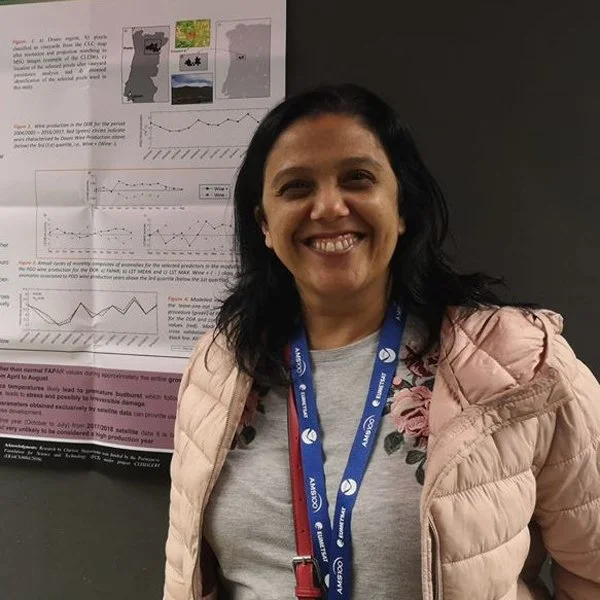
Célia Gouveia
Investigadora LSA SAF - IPMA
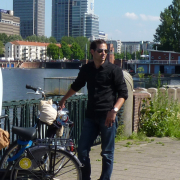
Duarte Oom
Investigador CEF - ISA ULisboa
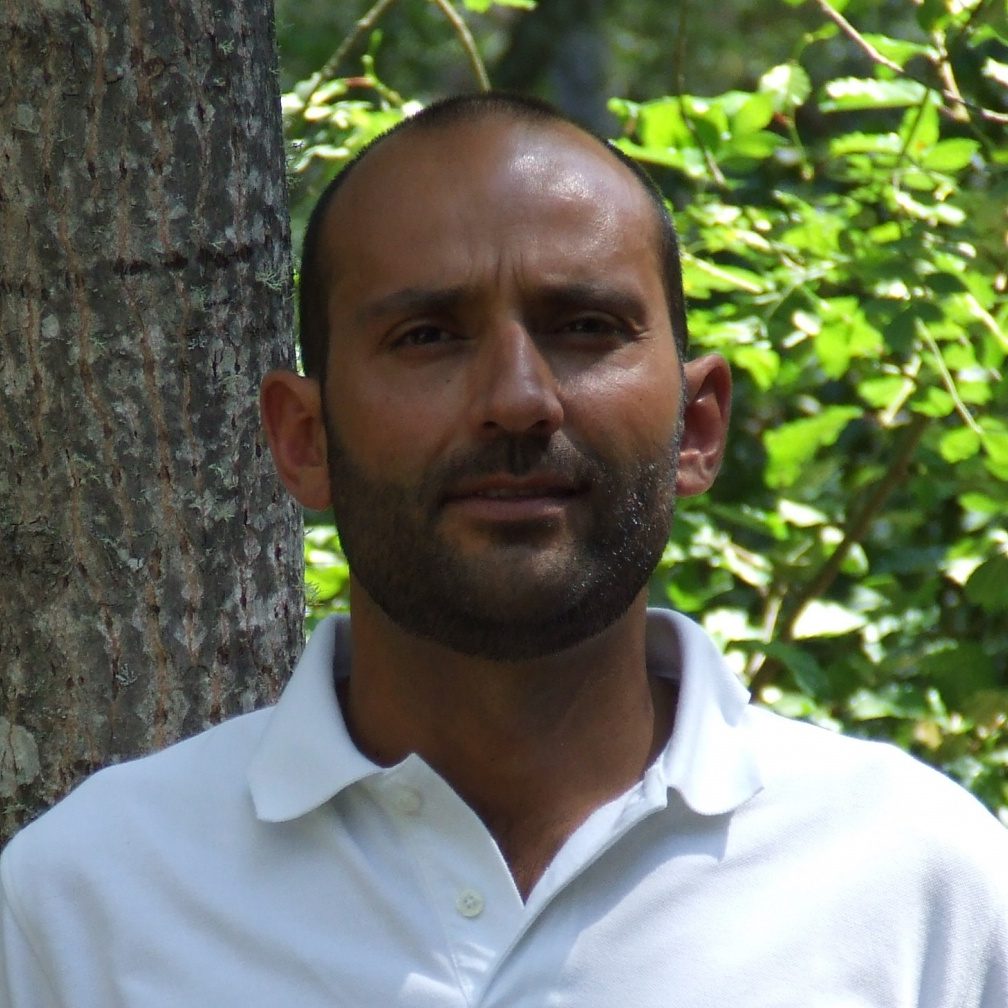
João Silva
Investigador CEF - ISA ULisboa

José Miguel Cardoso Pereira
Investigador CEF - ISA ULisboa

Alana Kasahara Neves
Investigadora CEF - ISA ULisboa
Feridun Turkman
Investigador CEA - Ciências ULisboa

Antónia Turkman
Investigadora CEA - Ciências ULisboa
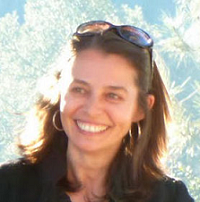
Maria Teresa Calado
Investigadora IDL - Ciências ULisboa

Ricardo Trigo
Investigador IDL - Ciências ULisboa

Renata Libonati
Consultora UFRJ

Virgílio Bento
Bolseiro IDL - Ciências ULisboa

Miguel Mota Pinto
Bolseiro IDL - Ciências ULisboa

Sílvia Nunes
Bolseira IDL - Ciências ULisboa
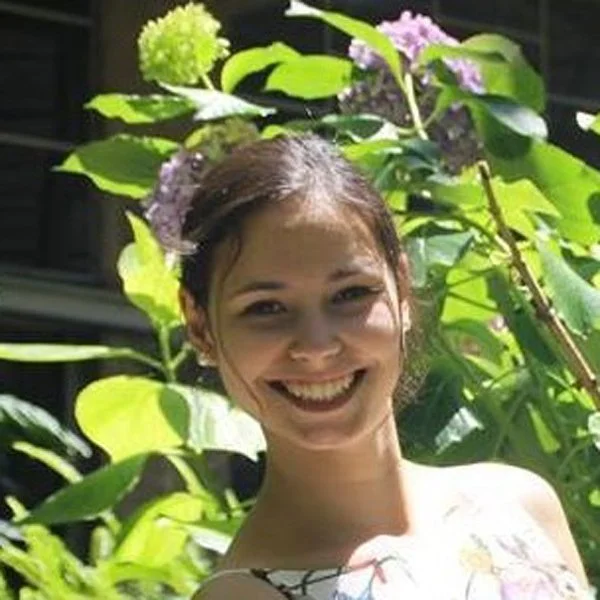
Alexandra Hurduc
Bolseira IDL - Ciências ULisboa
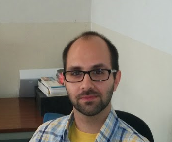
Diogo Martins
Bolseiro IDL - Ciências ULisboa

Patricia Páscoa
Bolseira LSA SAF - IPMA

Catarina Alonso
Bolseira LSA SAF - IPMA

Rajchandar Padmanaban
Bolseiro CEF - ISA ULisboa
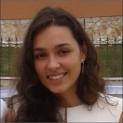
Sílvia Catarino
Bolseira CEF - ISA ULisboa
Artigos Científicos
Pinto MM , Libonati R, Trigo RM, Trigo IF, DaCamara CC (2019) “A deep learning approach for mapping and dating burned areas using temporal sequences of satellite images”, ISPRS Journal of Photogrammetry and Remote Sensing 160, 260-274 (publicado em Fevereiro de 2020) doi: 10.1016/j.isprsjprs.2019.12.014
Nunes SA , DaCamara CC , Turkman KF, Calado TJ, Trigo RM , Turkman MAA (2019) “Wildland fire potential outlooks for Portugal using meteorological indices of fire danger”. Natural Hazards and Earth System Sciences 19, 1459–1470 (publicado em 18/07/2019) doi: 10.5194/nhess-19-1459-2019
Sousa PM, Barriopedro D, Ramos AM, García-Herrera R, Espírito-Santo F, Trigo RM (2019) “Saharan air intrusions as a relevant mechanism for Iberian heatwaves: The record-breaking events of August 2018 and June 2019”, Weather and Climate Extremes 26, 100224 (publicado em 14/09/2019) doi: 10.1016/j.wace.2019.100224
Turco M, Jerez S, Augusto S, Tarín-Carrasco P, Ratola N, Jiménez-Guerrero P, Trigo RM (2019) “Climate drivers of the 2017 devastating fires in Portugal”, Scientific Reports 9, 13886 (publicado em 10/10/2019) doi: 10.1038/s41598-019-50281-2
Rodrigues M, Trigo RM , Vega-García C, Cardil A (2020) “Identifying large fire weather typologies in the Iberian Peninsula”, Agricultural and Forest Meteorology 280, 107789 (publicado em 04/11/2019) doi: 10.1016/j.agrformet.2019.107789
Ruffault J, Curt T, Moron V, Trigo RM, Mouillot F, Koutsias N, Pimont F, Martin‑StPaul N, Barbero R, Dupuy J-L, Russo A, Belhadj‑Khedher C (2020) “Increased likelihood of heat‑induced large wildfires in the Mediterranean Basin”, Scientific Reports 10, 13790 (publicado em 14/08/2020) doi: 10.1038/s41598-020-70069-z
Pinto MM, DaCamara CC, Hurduc A, Trigo RM, Trigo IF (2020) “Enhancing the fire weather index with atmospheric instability information”, Environmental Research Letters 15, 0940b7 (publicado em 07/09/2020) doi: 10.1088/1748-9326/ab9e22
Pinto MM, Trigo RM, Trigo IF, DaCamara CC (2021) “A Practical Method for High-Resolution Burned Area Monitoring Using Sentinel-2 and VIIRS”, Remote Sensing 13, 1608 (publicado em 21/04/2021) doi: 10.3390/rs13091608
Ermitão T, Gouveia CM, Bastos A, Russo (2021) “Vegetation Productivity Losses Linked to Mediterranean Hot and Dry Events ”, Remote Sensing 13(19), 4010 (publicado em 06/10/2021) doi: 10.3390/rs13194010
Páscoa P, Gouveia C, Russo A, Ribeiro A (2022) “Summer hot extremes and antecedent drought conditions in Australia”, International Journal of Climatology,42(11), 5487-5502 (publicado em 06/02/2022) doi: 10.1002/joc.7544
Aparício BA, Pereira JMC, Santos FC, Bruni C, Sá ACL (2022) “Combining wildfire behaviour simulations an network analysis to support fuel management: A Mediterranean landscape case study”, Ecological Indicators, 137, 108726 (publicado em Março de 2022) doi: 10.1016/j.ecolind.2022.108726
Bento VA, Russo A, Gouveia CM, DaCamara CC (2022) “Recent change of burned area associated with summer heat extremes over Iberia”, International Journal of Wildland Fire, 31(7), 658-669 (publicado em 06/07/2022) doi: 10.1071/WF21155
De Luca G, J. Silva JMN, Modica G (2022) “Short-term temporal and spatial analysis for post-fire vegetation regrowth characterization and mapping in a Mediterranean ecosystem using optical and SAR image time-series”, Geocarto International (publicado em 14/07/2022) doi: 10.1080/10106049.2022.2097482
Durão D, Alonso C, Gouveia C (2022) “The Performance of ECMWF Ensemble Prediction System for European Extreme Fires: Portugal/Monchique in 2018”, Atmosphere 13(8), 1239 (publicado em 04/08/2022) doi: 10.3390/atmos13081239
Aparício BA, Alcasena F, Ager A, Chung W, Pereira JMC, Sá ACL (2022) “Evaluating priority locations and potential benefits for building a nation-wide fuel break network in Portugal”, Journal of Environmental Management, 320, 115920 (publicado em 04/08/2022) doi: 10.1016/j.jenvman.2022.115920
Ermitão T, Gouveia CM, Bastos A, Russo AC (2022) “Interactions between hot and dry fuel conditions and vegetation dynamics in the 2017 fire season in Portugal”, Environmental Research Letters 17, 095009 (publicado em 07/09/2022) doi: 10.1088/1748-9326/ac8be4
De Luca G, Silva JMN, Modica G (2022) “Regional-scale burned area mapping in Mediterranean regions based on the multitemporal composite integration of Sentinel-1 and Sentinel-2 data”, GIScience & Remote Sensing, 59(1), 1678-1705 (publicado em 30/09/2022) doi: 10.1080/15481603.2022.2128251
Libonati R, Geirinhas JL, Silva PS, Monteiro dos Santos D, Rodrigues JA, Russo A, Peres LF, Narcizo L, Gomes MER, Rodrigues AP, DaCamara CC, Pereira JMC, Trigo RM (2022), “Drought–heatwave nexus in Brazil and related impacts on health and fires: A comprehensive review”, Annals of the New York Academy of Sciences, 1-19 (publicado em 02/09/2022) doi: 10.1111/nyas.14887
Sá ACL, Aparicio B, Benali A, Bruni C, Salis M, Silva F, Marta-Almeida M, Pereira S, Rocha A, Pereira JMC (2022), “Coupling wildfire spread simulations and connectivity analysis for hazard assessment: a case study in Serra da Cabreira, Portugal”, Natural Hazards & Earth System Science, 22, 3917–3938 (publicado em 09/12/2022) doi: 10.5194/nhess-22-3917-2022
DaCamara CC, Pereira JMC, Nunes SA, Libonati R (2022) “A ordem mundial do fogo”, Gazeta de Física, 42 (Fascículo 1/2) ISSN: 037-3561
Ramos AM, Russo A, DaCamara CC, Nunes SA, Sousa P, Soares PMM, Lima MM, Hurduc A, Trigo RM (2023) “The compound event that triggered the destructive fires of October 2017 in Portugal”, iScience, 106141 doi: 10.1016/j.isci.2023.106141
DaCamara CC, Libonati R, Nunes SA, de Zea Bermudez P, Pereira JMC (2022), “Modeling Fire Radiative Power Released by Vegetation Fires at the Global Scale Using a Two Generalized Pareto Tail Lognormal Body Distribution”, Physica A (under review) Available at SSRN
Nunes SA, DaCamara CC, Pereira JMC, Trigo RM (2022), “Assessing the role played by meteorological conditions on the interannual variability of fire activity in four subregions of Iberia”, International Journal of Wildland Fire (under review)
Neves AK, Campagnolo ML, Silva JMN, Pereira JMC (2022), “A Landsat-based atlas of monthly burned area for Portugal, 1984-2021. International Journal of Applied Earth Observation and Geoinformation (under review)
Santos LC, Lima MM, Bento VA, Nunes SA, DaCamara CC, Russo A, Soares PMM, Trigo RM (2023), “An evaluation of the atmospheric instability effect on wildfire danger using ERA5 over the Iberian Peninsula”, Fire (submitted)
Bento VA, Lima DCA, Santos LC, Lima MM, Russo A, Nunes SA, DaCamara CC, Trigo RM, Soares PMM (2023), “The future of extreme meteorological fire risk under climate change scenarios for Iberia”, Weather and Climate Extremes (submitted)
De Luca G, Modica G, Silva JMN, Praticò S, Pereira JMC (2023), “Assessing tree crown fire damages integrating linear spectral mixture analysis and supervised machine learning on Sentinel-2 imagery”, International Journal of Digital Earth (submitted)
Capítulos de Livro
DaCamara CC, Pereira JMC, Libonati R, Nunes SA (2022),”A statistical model of Fire Radiative Power released by wildfires at the global scale”. In “Advances in Forest Fire Research 2022” (Eds Domingos Xavier Viegas and Luís Mário Viegas). pp. 954-958. (Imprensa da Universidade de Coimbra, eISBN 978-989-26-2298-9) doi: 10.14195/978-989-26-2298-9_144
Nunes SA, DaCamara CC, Pereira JMC, Trigo RM (2022),”Assessing the role played by meteorological conditions on the interannual variability of fire activity in four subregions of Iberia”. In “Advances in Forest Fire Research 2022” (Eds Domingos Xavier Viegas and Luís Mário Viegas). pp. 999-1004. (Imprensa da Universidade de Coimbra, eISBN 978-989-26-2298-9) doi: 10.14195/978-989-26-2298-9_151
Mota B, Freire JG, Oliveira M, Nunes SA, Dilão R, DaCamara CC (2022),” Using cellular automata to assess the role played by wind direction in two large fire episodes in Portugal”. In “Advances in Forest Fire Research 2022” (Eds Domingos Xavier Viegas and Luís Mário Viegas). pp. 431-435. (Imprensa da Universidade de Coimbra, eISBN 978-989-26-2298-9) doi: 978-989-26-2298-9_69
Comunicações Científicas
DaCamara CC, Trigo RM (2019) “Using Circulation Weather Types to model the distribution of extreme fire days in Portugal”, EGU General Assembly 2019, Abril 7-12, Vienna, Austria, Geophysical Research Abstracts, Vol. 21, EGU2019-15551 link
Mota B, Freire J, DaCamara CC (2019) “Simulating large fire events in Portugal using cellular automata”, EGU General Assembly 2019, Abril 7-12, Vienna, Austria, Geophysical Research Abstracts, Vol. 21, EGU2019-9547 link
Pinto MM, Hurduc A, DaCamara CC, Trigo IF, Trigo RM (2019) “Burned Areas Segmentation with Convolutional Neural Networks”, EGU General Assembly 2019, Abril 7-12, Vienna, Austria, Geophysical Research Abstracts, Vol. 21, EGU2019-11212 link
DaCamara CC, Trigo RM (2019) “Fire activity in Portugal under present and future climate scenarios: a study based on Circulation Weather Types and the LSA SAF Fire Radiative Power product”, Joint Satellite Conference, NOAA/AMS/EUMETSAT, Sept. Outubro 30, Boston, USA link (pp. 17 and 39)
DaCamara CC, Trigo RM (2019) “Modeling the statistical distribution of extreme fire days in Portugal”, Programa e livro de resumos, XXIV Congresso da Sociedade Portuguesa de Estatística (SPE 2019), Nobembro 6-9, Amarante (Portugal) link (p. 5)
Pereira P, Pereira S, Turkman MA, Turkman KF, Nunes SA, DaCamara CC (2019) “Risk map: prediction of expected burned area”, Programa e livro de resumos, XXIV Congresso da Sociedade Portuguesa de Estatística (SPE 2019), Novembro 6-9, Amarante (Portugal) link (p. 8)
Páscoa P, Gouveia C, Russo A, Ribeiro A (2020) “Are the antecedent drought conditions magnifying the summer hot extremes in Australia?”, EGU General Assembly, Maio 4-8, Online, EGU2020-19581 link
Alonso C, Gouveia C, Páscoa P (2020) “Assessment of the relationship between pre- fire fuel estimates and Fire Radiative Power in Portugal”, EGU General Assembly 2020, Maio 4-8, Online, EGU2020-19634 link
Russo A, Ribeiro AFS, Gouveia C, Dutra E, Soares PMM, Trigo RM, Pires C, Zscheischler J (2020) “Hot and Dry Meteorological Extremes in the Mediterranean.”, Weather and Climatic Extremes: Data, Analysis and Impact, WCEDAI, Setembro 8-10, Tomsk, Russia link
Ribeiro AFS, Russo A, Gouveia C, Páscoa P, Zscheischler J (2020) “Agricultural Impacts of Compound Dry and Hot Extremes in the Iberian Peninsula”, Weather and Climatic Extremes: Data, Analysis and Impact, WCEDAI, Setembro 8-10, Tomsk, Russia link
De Luca G, Silva JMN, Modica G (2020) “Sentinel-1 SAR satellite data and open-source Python algorithms for unsupervised burned area detection in Mediterranean ecosystems”, Remote Sensing for Land Degradation: Analysis and Sustainable Management of Agroforestry Systems, Italian Society for Agricultural Engineering (AIIA), Novembro 27, Online link
Páscoa P, Gouveia C, Russo A, Ribeiro A (2021) “Joint probability analysis of drought and hot extremes in Australia”, EGU General Assembly 2021, Abril 19-30, Online, EGU2021-5984 link
Durão R, Alonso C, Gouveia C (2021) “Are fire probabilistic products an effective early warning tool in the management of prevention fire activities? – the case of Monchique 2018 wildfire”, EGU General Assembly 2021, Abril 19-30, Online, EGU2021-10133 link
Alonso C, Gouveia C (2021) “Performance Evaluation of Fire Risk Map from LSA-SAF over Mediterranean region in 2020”, EGU General Assembly 2021, Online, Abril 19-30, EGU2021-12863 link
Silva TE, Russo A, Gouveia CM (2021) “The Impact of Mediterranean Droughts and Large Fires on the Carbon Balance of Vegetation”, EGU General Assembly 2021, Online, Abril 19-30, EGU2021-11135 link
De Luca G, Silva JMN, Oom D, Modica G (2021) “The Combined use of Sentinel-1 and Sentinel-2 for burn severity mapping in a Mediterranean region”, The 21st International Conference on Computational Science and Applications (ICCSA 2021), Setembro 13-16, Cagliari, Italy link
Ermitão T, Gouveia C, Bastos A, Russo A (2022) “Interactions between hot and dry conditions and vegetation dynamics in the 2017 fire season in Portugal”, MPECAF final workshop, Março, Lisboa, Portugal link
Trigo R, Turco M, Jerez S, Sousa P, Russo A, Ruffault J (2022) “Recent and future intense fire seasons in the Mediterranean basin: the increasing role of droughts and heatwaves”, EGU General Assembly 2022, Maio 23–27, Vienna, Austria, EGU22-1169 link
DaCamara CC, Nunes SA, Pereira JMC (2022) “The role of meteorological factors on interannual variability of fire activity in Iberia: an assessment performed over four subregions”, EGU General Assembly 2022, Maio 23–27, Vienna, Austria, EGU22-12805 link
De Luca G, Silva JMN, Modica G (2022) “Temporal and spatial analysis for post-fire vegetation recovery in a Mediterranean site. An approach using optical Sentinel-2 and SAR Sentinel-1 imagery”, EGU General Assembly 2022, Maio 23–27, Vienna, Austria, EGU22-12542 link
Nunes SA, Belém LBC, Libonati R, DaCamara CC (2022) “An early warning system of fire danger for the Brazilian Pantanal”, EGU General Assembly 2022, Maio 23–27, Vienna, Austria, EGU22-12293 link
Páscoa P, Gouveia C, Russo A, Ribeiro A (2022) “The effect of drought and temperature extremes on burned area in Southeastern Australia”, EGU General Assembly 2022, Maio 23–27, Vienna, Austria, EGU22-8295 link
Durao R, Silva M, Alonso C, Gouveia C (2022) “Calibration of the Fire Danger Classes and Trend analysis over the Mediterranean basin, based on the Canadian Forest Fire Weather Index System and the Fire Released Energy from SEVIRI/MSG”, EGU General Assembly 2022, Maio 23–27, Vienna, Austria, EGU22-9651 link
Alonso C, Durão R, Gouveia C (2022) “Live fuel moisture content approach using satellite data for Portugal mainland”, EGU General Assembly 2022, Maio 23–27, Vienna, Austria, EGU22-10035 link
Ermitão T, Gouveia C, Russo A (2022) “The Impacts of the 2017 Catastrophic Fire Season in Portugal on Vegetation Productivity”, EGU General Assembly 2022, Maio 23–27, Vienna, Austria, EGU22-8767 link
Páscoa P, Gouveia CM, Russo A, Ribeiro A (2022) “Compound hot, dry, and burnt events in south-eastern Australia”, DAMOCLES Compound Events Final Conference, Setembro 6-8, Lisboa, Portugal
Ermitão T, Gouveia C, Bastos A, Russo A (2022) “Vegetation role during the anomalous hot and dry conditions on the 2017 fire season in Portugal”, DAMOCLES Compound Events Final Conference, Setembro 6-8, Lisboa, Portugal
DaCamara C, Pinto M, Trigo I, Trigo R, Nunes S (2022) “Using LSA SAF Fire Radiative Power data to calibrate an hourly index of meteorological fire danger”, The 2022 EUMETSAT Meteorological Satellite Conference, Brussels, Belgium, Setembro 19-23 link
Catarino S, Silva JMN, Aubard V, Oom D, Libonati R, Pereira JMC (2022) “Semi-automatic monitoring of burned area and fire severity using Sentinel-2 imagery and an object-based image classification procedure”, 9º Congresso Florestal Nacional – Sustentabilidade da floresta portuguesa: valorizar para superar desafios, Outubro 11-14, Funchal, Portugal link (p. 52)
Neves AK, Campagnolo ML, Silva JMN, Pereira JMC (2022) “Assigning dates to Portugal annual burned area mapping”, 9º Congresso Florestal Nacional – Sustentabilidade da floresta portuguesa: valorizar para superar desafios, Outubro 11-14, Funchal, Portugal link (p. 56)
Páscoa P, Ermitão T, Gouveia CM (2022) “Identification of the most fire susceptible areas in Portugal”, 17th Plinius Conference on Mediterranean Risks, Outubro 18-21, Frascati, Rome, Italy, Plinius17-76 link
Ermitão T, Gouveia C, Bastos A, Russo A (2022) “Compound impact of anomalous vegetation activity and hot/dry conditions during the 2017 extreme fire season in Portugal”, 17th Plinius Conference on Mediterranean Risks, Outubro 18-21, Frascati, Rome, Italy, Plinius17-70 link
DaCamara CC, Pereira JMC, Libonati R, Nunes SA (2022), ”A statistical model of Fire Radiative Power released by wildfires at the global scale”, IX International Conference on Forest Fire Research, Novembro 11-18, Coimbra, Portugal link
Nunes SA, DaCamara CC, Pereira JMC, Trigo RM (2022), ”Assessing the role played by meteorological conditions on the interannual variability of fire activity in four subregions of Iberia”, IX International Conference on Forest Fire Research, Novembro 11-18, Coimbra, Portugal link
Mota B, Freire JG, Oliveira M, Nunes SA, Dilão R, DaCamara CC (2022), ”Using cellular automata to assess the role played by wind direction in two large fire episodes in Portugal”, IX International Conference on Forest Fire Research, Novembro 11-18, Coimbra, Portugal link
Camara CC, Nunes SA (2023), ”O impacto das alterações climáticas no risco de grandes incêndios em Portugal”, Jornadas Internacionais sobre Fogos Florestais – Alto Minho FIRECAMP 2023, Fevereiro 09-10, Arcos de Valdevez, Portugal
Neves AK, Campagnolo ML, Silva JMN, Pereira JMC (2023), ”A new atlas of monthly burned area mapping for Portugal (1984-2021)”, IX International Conference on Forest Fire Research, Novembro 11-18, Porto, Portugal (aceite)
Catarino S, Silva JMN, Neves AK, Campagnolo ML, Aubard V, Oom D, Libonati R, Pereira JMC (2023), ”A segmentation approach for automatic monitoring of burned area using Sentinel-2 imagery”, IX International Conference on Forest Fire Research, Novembro 11-18, Porto, Portugal (aceite)
DaCamara CC, Nunes SA, Pereira JMC (2023), ”A statistical model to assess the impact of policies of ignition limitation in Portugal”, IX International Conference on Forest Fire Research, Novembro 11-18, Porto, Portugal (aceite)
Nunes SA, DaCamara CC, Trigo RM, Trigo IF, Gouveia CM, Libonati R, Belém LBC (2023), ”Forecasting meteorological fire danger with a statistical model of Fire Radiative Power”, IX International Conference on Forest Fire Research, Novembro 11-18, Porto, Portugal (aceite)
Oliveira M, Mota B, Freire JG, Nunes SA, DaCamara CC (2023), ”A cellular automata model for wind-driven fires”, IX International Conference on Forest Fire Research, Novembro 11-18, Porto, Portugal (aceite)
Contacto
Carlos da Camara
cdcamara@fc.ul.pt
Instituto Dom Luiz
Faculdade de Ciências da Universidade de Lisboa
Edifício C8, Piso 3
Campo Grande
1749-016 Lisboa Portugal
(+351) 217 500 000
